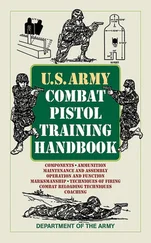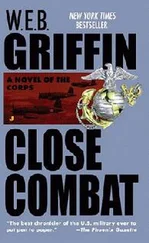Although the beam only remained in contact with the satellite for a few seconds, the laser’s energy changed into intense heat, slicing through the skin, evaporating the metal, and instantly frying the sophisticated electronics housed in its core.
Before manning the workstation controlling the warheads, Sergei used the keys to extract the launching codes from the safe next to the system. He activated the system and spent a few minutes typing the thirty-characters-long codes, working through several menus and levels of security. Another set of codes allowed him to move down the encrypted system until he reached the directory where the launching software resided. A few more keystrokes and the twenty-one-inch Sony color monitor displayed a list of warheads, labeled UNSC15KTSN001 through UNSC15KTSN030 in cyan on a black background.
He placed an index finger, trembling from excitement, over a springtensioned trackball — a mouse didn’t work well in zero gravity — bringing the cursor to the BLU-85 warhead SN#001. Sergei’s plan, which he had secretly worked out two weeks prior to his launch with Nikolai Naskalhov, an aide to the president of Chechnya, was simple: gain control of the warheads as a hammer against the Russian troops threatening to invade Chechnya. The destruction of the Russian satellite had been Sergei’s message to Moscow that the people of Chechnya now had an ally high above the clouds. As he gained control of GPATS, another message was being delivered to the Kremlin: unless the Russian 157th armored division retreated from the border with Chechnya, he would release a warhead over an undisclosed location. More demands would follow.
The adrenaline rush making it difficult to swallow, Sergei clicked the button beneath the trackball. He wanted to activate the warheads and have them ready for launch at a moment’s notice.
The UNSC15KTSN001 warhead turned magenta, and a message appeared:
UNSC15KTSN001 HAS BEEN SELECTED INSERT VALID UNSC ACCESS CARD TO ACTIVATE
******00:59******
A slot opened beneath the monitor and a red LED began to blink next to it.
Sergei froze.
Insert Valid United Nations Security Council access card?
Why would he need one when he had already logged into the system and entered all the authorization codes successfully?
Confused, Sergei glanced at the screen again. It now read:
UNSC15KTSN001 HAS BEEN SELECTED INSERT VALID UNSC ACCESS CARD TO ACTIVATE
******00:55*****
And a second later,
UNSC15KTSN001 HAS BEEN SELECTED INSERT VALID UNSC ACCESS CARD TO ACTIVATE
******00:54******
The Russian’s soft eyes widened in fear when he realized the system would not let him start the launch sequence unless he inserted a UNSC access card in the slot within the next fifty-four seconds. The UNSC had added a safety feature that he didn’t know existed, and if the system was as secured as he expected it to be, he would probably only get one chance at inserting the card before the computers would lock him out.
But where do I—
You idiot! The station commander! The card! He glanced at the screen once more.
UNSC15KTSN001 HAS BEEN SELECTED INSERT VALID UNSC ACCESS CARD TO ACTIVATE
******00:47******
Sergei jumped off the chair and propelled himself to the entrance of the GPATS module, floated across Unity, and into the Habitation Module. Shoving aside the American floating next to the galley, he reached the end of the long, cylindrical compartment, halting his momentum by holding on to the edge of the sleeping compartment.
He tugged at the chain around the neck of the dead station commander, but it didn’t give. Beads of sweat lifting off his forehead, the Russian raised the chain over his victim’s head. Holding the electronic card in his left hand, he kicked his legs against the side of the sleeping compartment, propelling himself back toward Unity. He miscalculated his zero-G flight, crashing his right shoulder against the edge of the passageway. The impact deflected his forward momentum, sending him floating out of control inside Unity.
Wasting precious seconds, ignoring the pain, Sergei clawed at anything within reach to regain control, grabbing on to a built-in handle next to the hatch connecting Unity to the cupola. In the process, he let go of the card, which floated toward his feet.
In one swift motion, Sergei snagged the chain, pulling the card to his chest. Kicking his legs against the cupola’s control panel, he shot himself through the D-shaped entry of the GPATS module, reaching the workstation a moment later.
******PROCEDURE VIOLATION****** TIME LIMIT EXCEEDED. SYSTEM RESET IN PROGRESS
******167:59:54******
Procedure violation! He had missed the window by six seconds!
Sergei tried to insert the badge, but the slot was already closed. He tried to type a command to reset the system manually, but the system would not respond. The keyboard was locked. He tried the power switch on the side of the machine, but it did not have any effect. The system was obviously designed to bypass all exterior input after such violation, and it would remain like that for 168 hours — one week — before it would let him try again.
Sergei was familiar with procedure violations, and the only way to reset the system before the stated time was by entering a special access code known only by four people in the world: The U.S. President, the Russian President, the British Prime Minister, and the Secretary General of the United Nations. The procedure was implemented as a safety measure against exactly this type of intrusion. One week was usually enough time to get either a shuttle or a Russian Soyuz packed with armed United Nations forces up here. During his last six months of training at Johnson Space Center, in Houston, Sergei had seen a platoon of UN Security Forces in similar zero-G training exercises. While Sergei trained to use a screwdriver in space, the soldiers practice zero-G warfare tactics. But fortunately for Sergei, he still had a chance of pulling this off. It just would take a little more time and a hell of a lot more nerve.
Moving up the module to the laser station, Sergei quickly verified his access to the laser. Unlike the warheads, the laser system could never be locked — as long as the user had the right authorization codes. Otherwise, the station ran the risk of getting damaged by space junk. He moved over to the backup warhead-deployment workstation, next to the one he had locked.
Sergei tried his luck at gaining access to the warheads’ directory. He got the message:
SYSTEM LOCKED BY OTHER USERS PLEASE TRY AGAIN IN 167:58:42
Frowning at his own stupidity, but grateful that at least he could defend himself and prevent anyone from getting near the station, Sergei deactivated the system and floated back to the Habitation Module, where he prepared a coded message that he sent to a mobile tracking station in Chechnya ten minutes later, when the International Space Station flew over the Caucasus Mountains.
The reply from his controller was very clear: hold your ground. Regain control of the warheads and advise when Sergei was in a position to launch. He would be provided with a priority list of targets at a later time. Right then control of the ISS played a significant role in the ongoing discussions with Russia, providing Chechnya with bargaining leverage against the Russian armored divisions gathered at its border. He was also told that the hearts of the Chechen people were with him at this time.
Afterward, Sergei dragged the bodies of the four astronauts across Unity and into the hyperbaric airlock, which provided an effective and safe mean for the transfer of crew and equipment between pressurized and unpressurized zones.
He gave the interior of the compartment a visual check to verify that all airlock equipment — including the two AMEX AX-5 EVA hard suits and all power tools — were safely secured, before floating back up into Unity. Closing the hatch, he used the small control panel next to the hatch to depressurize the airlock from the normal atmosphere inside the station of 14.7 pounds per square inch (PSI) to 0.5 PSI. As Sergei remotely opened the airlock’s exterior hatch, the pressure differential between the vacuum of space and the low pressure of the airlock sucked the four astronauts out of the airlock and into free space.
Читать дальше












